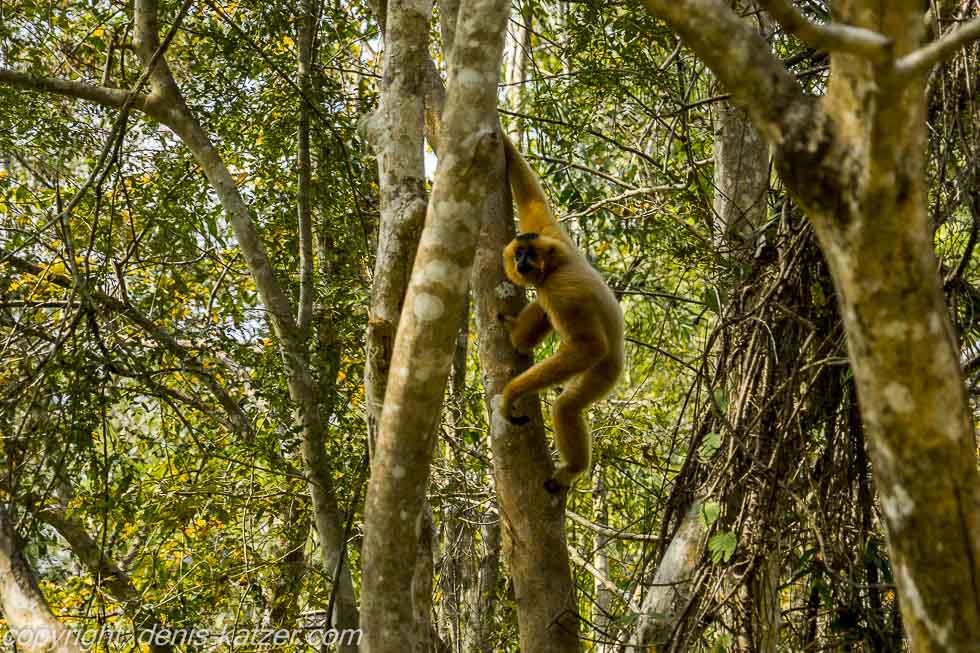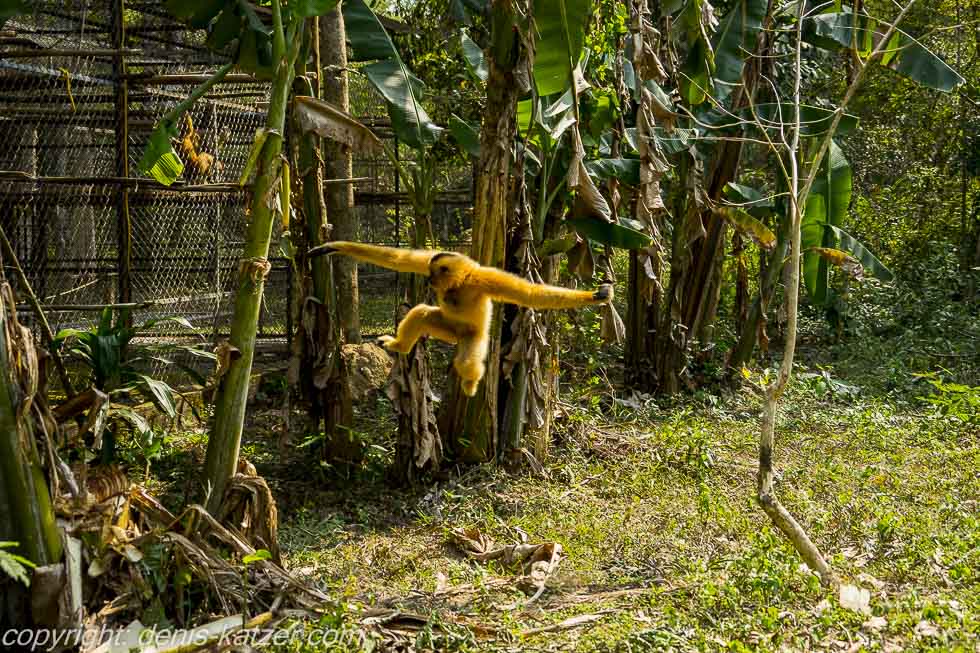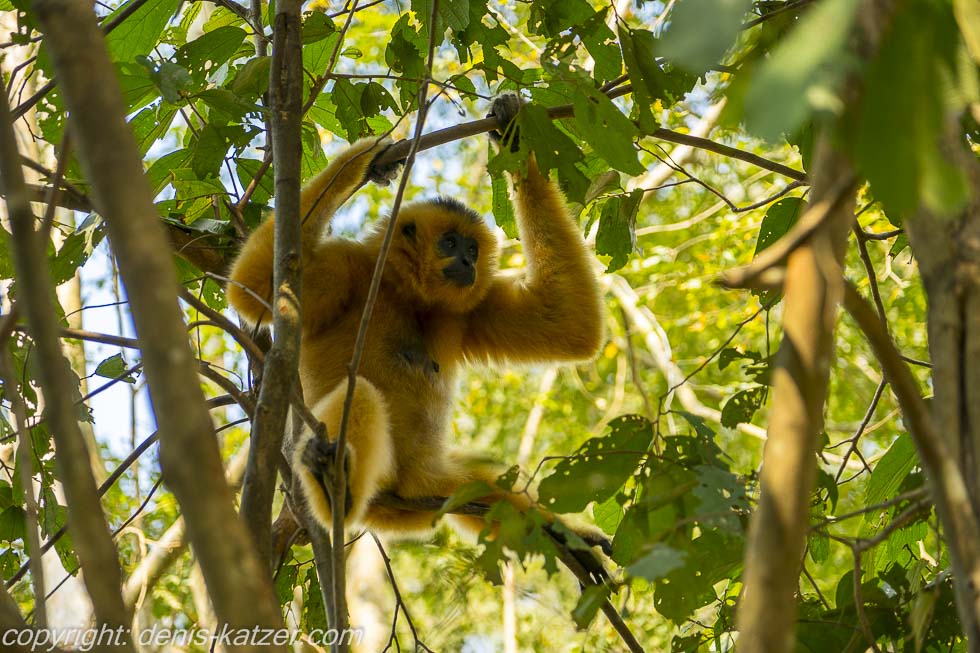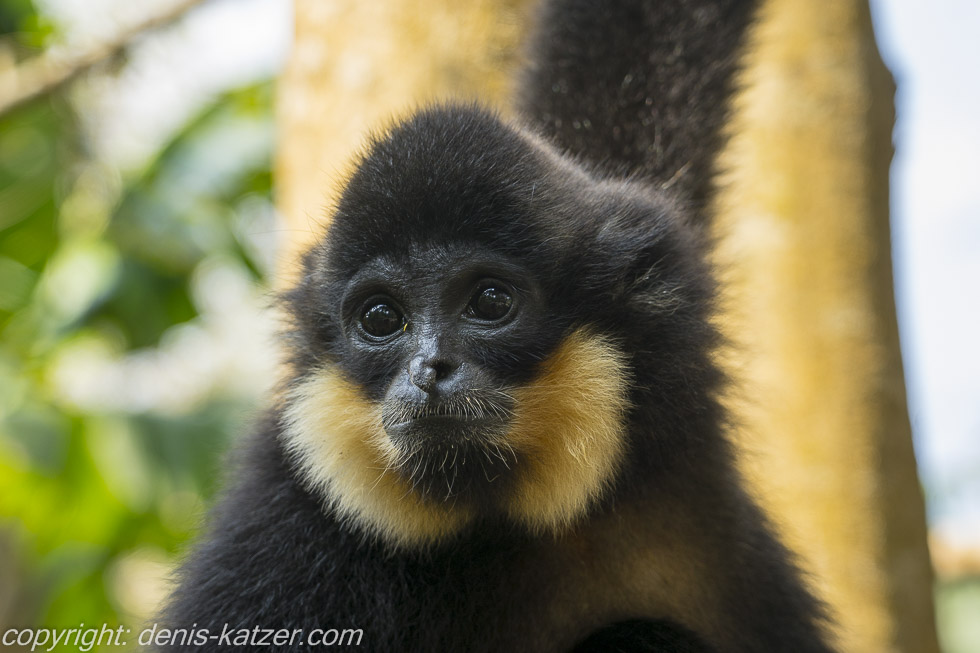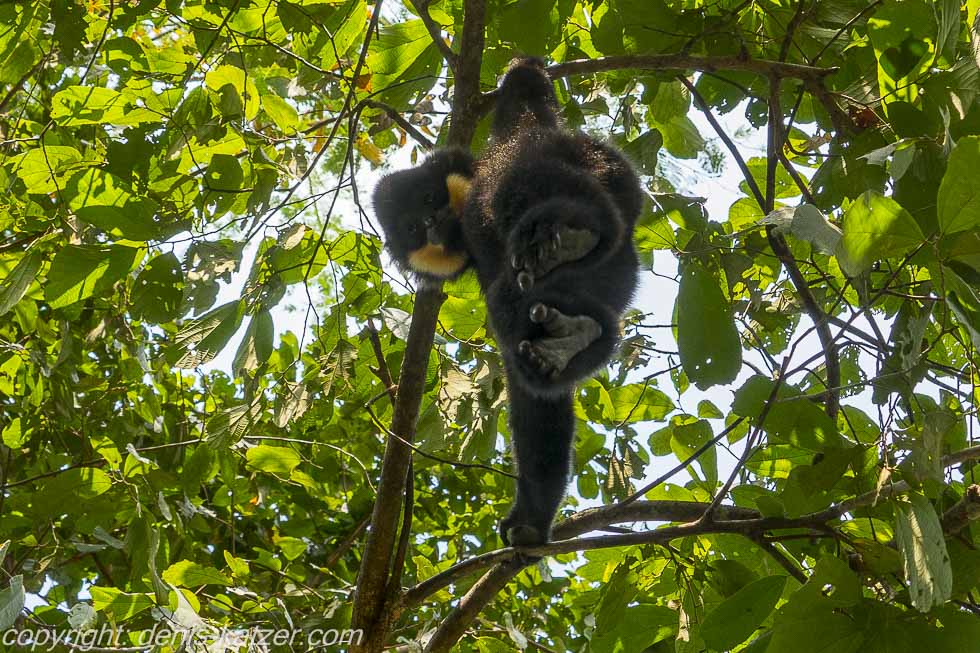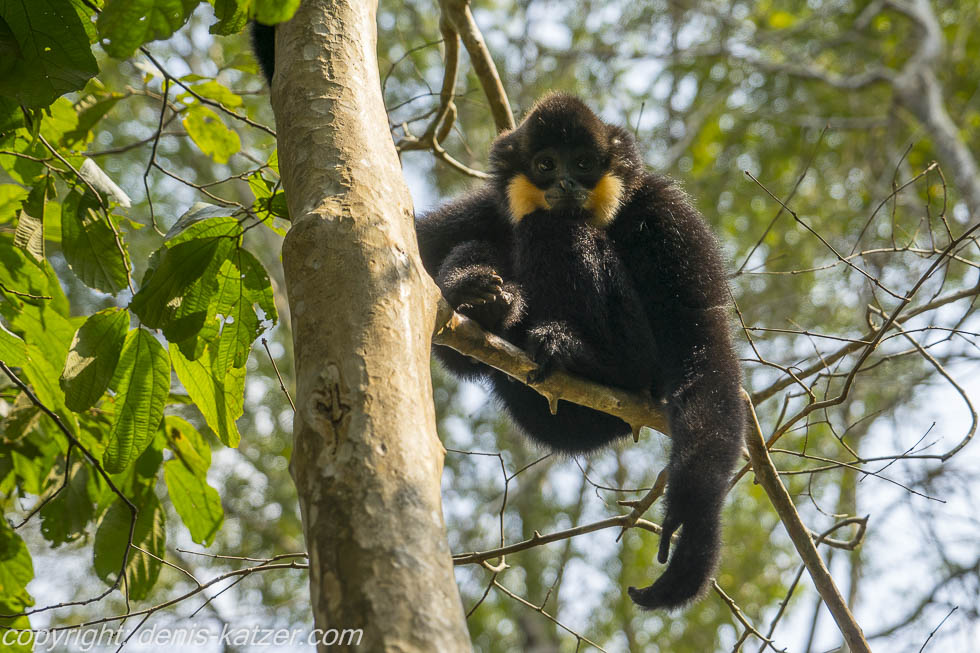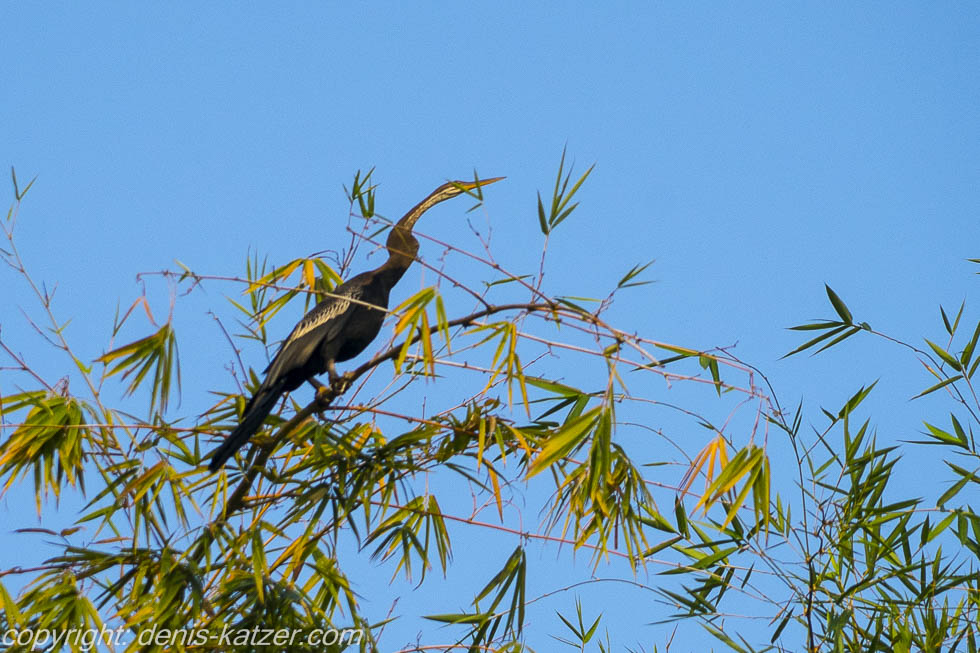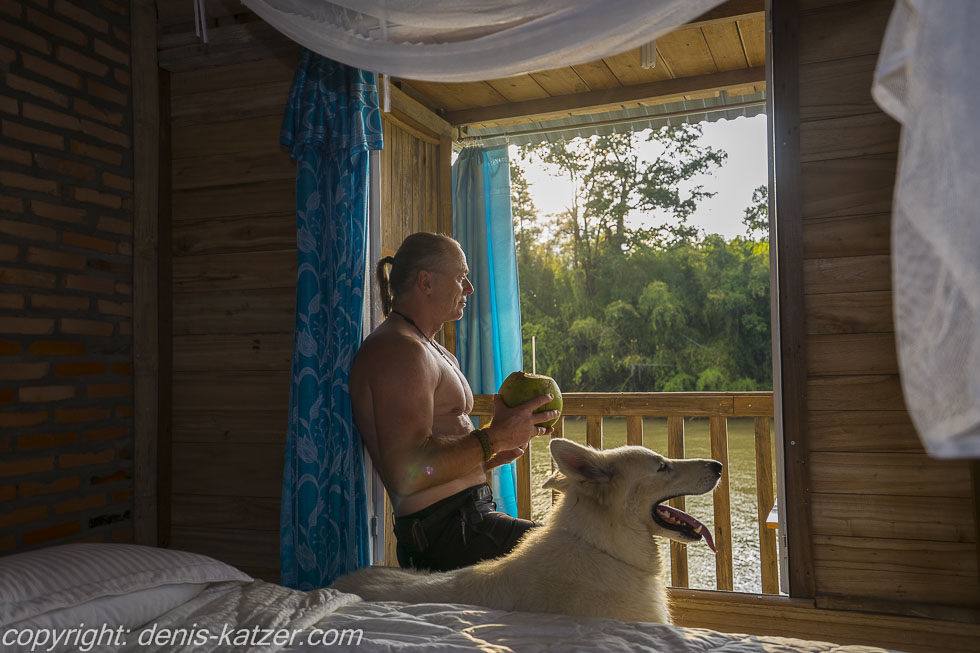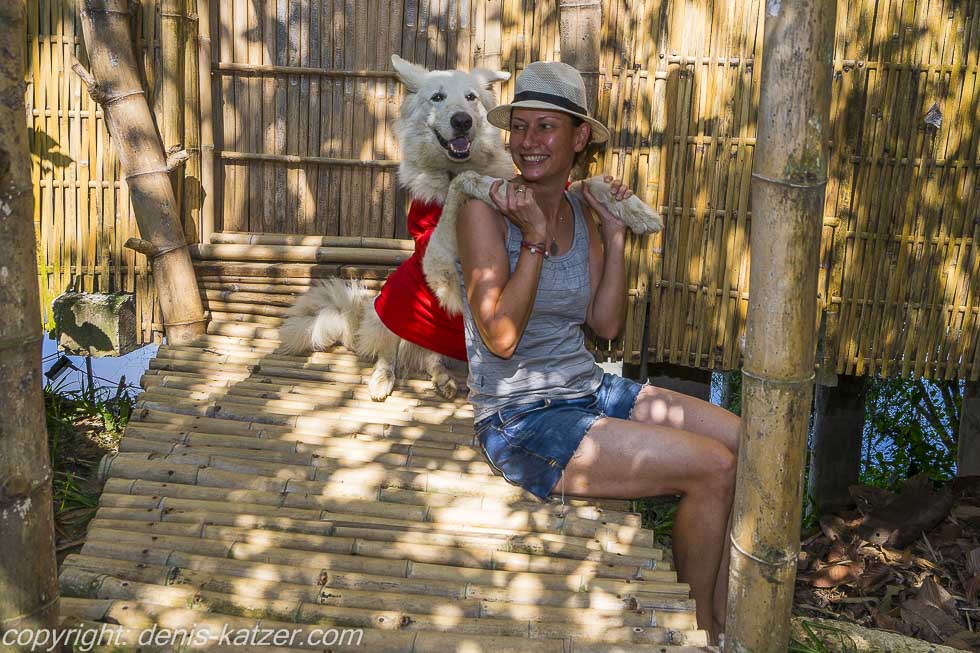
Sopranos in the jungle
N 11°25'15.9'' E 107°25'49.3''
Date:
13.03.2017 until 14.03.2017
Day: 622 – 623
Country:
Vietnam
Province:
Đồng Nai
Location:
Kat Tien National Park
Latitude N:
11°25’15.9”
Longitude E:
107°25’49.3”
Total kilometers:
22,704 km
Maximum height:
55 m
Total altitude meters:
68.623 m
Sunrise:
05:59 a.m. – 05:58 a.m.
Sunset:
6:00 pm
Temperature day max:
33°C
(Photos of the diary entry can be found at the end of the text).
The sun is just about to rise above the sea of jungle. The song of the gibbon monkeys flies over the Don Nai. We are sitting in a sleek, white motorboat. Xuan, the co-owner of the Bamboo Lodge, invited us on the US$ 60 tour. The outboard motor chugs quietly along. The boat glides over the brown-green surface of the jungle river. The twittering of a few birds, which we rarely see, penetrates the dense greenery. “I don’t know why, but you normally see a lot of birds here,” Xuan explains. Even the monkeys, which jump from branch to branch at this early hour, hide from us. “Strange, maybe it’s the weather,” Xuan apologizes. “No problem. We still like the tour,” we reassure him as we enjoy the peace and quiet, the tropically warm temperatures and the awakening day. After almost two hours down the river, it’s time to return to the lodge. Xuan steps on the gas, the engine roars and we shoot across the mirror-smooth surface of Dong Nai at 50 km/h. I stand with Ajaci right at the bow of the motorboat, spread my arms out like a bird’s wings and fly over the water.
Around midday, we cross the river again on the small ferry. In the national park we visit the gibbon monkey rescue and rehabilitation center. (Yellow-cheeked crested gibbons) A young English woman, who is working as a volunteer in Cat Tien National Park for a year, tells us very enthusiastically about the important work of the Rescue Center. We are also not surprised to hear that the survival of these funny creatures with their uniquely beautiful song is under serious threat. “One reason is excessive deforestation. This causes the gibbons to lose their habitat, because after every bam has been cut down, the former forest is used for agricultural purposes. Another reason is poaching. The bandits sell the gibbons to restaurants, hotels, zoos and for private collections. There is even a real trade in young animals whose mothers have been shot because, as mothers do, they were defending their babies while hunting them. It is a terrible situation. In Vietnam, keeping gibbons is now illegal, but people don’t care about the law. When we find out about this, a special team, equipped with the official rights, visits the place where a gibbon is being kept. In most cases, the owners of the gibbon have already been tipped off before the action, so they simply give it away for a few days. Once we have disappeared, the gibbon reappears. It is sometimes a hopeless undertaking. Nevertheless, our animal rights activists are always successful. That’s why we have many gibbons here that we reintroduce into their natural habitat after a while. Sometimes we are successful. However, some of the gibbons have to live in large cages or enclosures for the rest of their lives because they are no longer able to find enough food for themselves.” “How many gibbons are there left?” I want to know. “With 432 to 972 groups, the most important population lives in the Seima Protection Forest in Cambodia. Here in Cat Tien we have a population of about 149 groups and then there are about 124 groups in Bu Gia Map National Park in the Central Highlands.
“Oh, listen how beautifully they sing!” says Tanja, as one of the primates makes a long drawn-out sound. “Yes, our boys can do that perfectly,” laughs the volunteer. “You can still hear the singing three kilometers away,” she explains. “This is how they communicate with neighboring pairs and strangers. They also attract potential partners with their calls. Females and males often sing a duet.” “Really beautiful,” replies Tanja. “You can’t get enough of it. I’ve been here for six months now and wake up every morning delighted by the beautiful sounds. Incidentally, Japanese researchers have discovered that gibbons use the same vocal technique as humans who sing. When they sing, they master the vocal techniques that professional sopranos have to work hard to master.” “So they have something in common with us?” asks Tanja. “This is actually the case. It has been scientifically proven that the sounds that are amplified by a throat pouch originate in the larynx and are filtered and altered in sound by the vocal tract, which includes the throat, oral cavity and nasal cavities. This means that we humans with our multi-layered vocal abilities are not the only ones on earth.” “So we share our physical requirements for speech with other primates?” asks Tanja. “That’s right. UuuuuuuuUUUUUUUUUHHHHHHHH! uuuuuuuuuuuUUUUUUUUHHHHHHH!” we are interrupted by the singing of some long-armed forest dwellers. “Really fascinating,” I say, listening.
Back in our beautiful room on the banks of the jungle river, we sit on the simple wooden terrace and quench our thirst with a fresh coconut. Meanwhile, heavy storm clouds are gathering. Lightning flashes through the firmament, illuminating the canopy of the jungle for a few seconds. As if they had parted the rain-soaked clouds with a sword strike, unchecked masses of water come crashing down. Spellbound, we watch a spectacle in a class of its own as the world seems to drown for 20 minutes. Then, as if nothing had happened, the black clouds moved on. A ray of sunshine flashes from the sky and bathes the Dong Nai in a mystical golden light…
If you would like to find out more about our adventures, you can find our books under this link.
The live coverage is supported by the companies Gesat GmbH: www.gesat.com and roda computer GmbH http://roda-computer.com/ The satellite telephone Explorer 300 from Gesat and the rugged notebook Pegasus RP9 from Roda are the pillars of the transmission. Pegasus RP9 from Roda are the pillars of the transmission.
